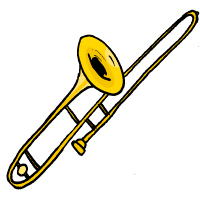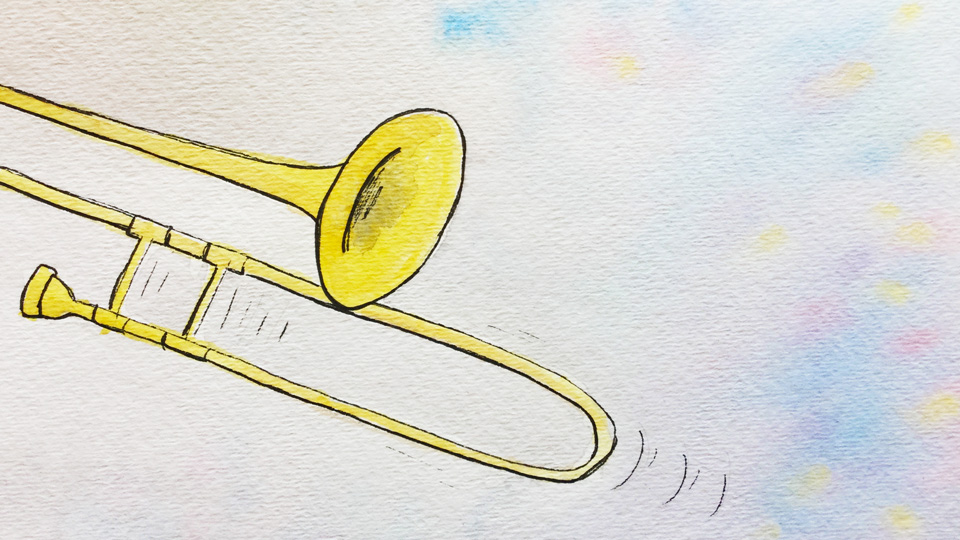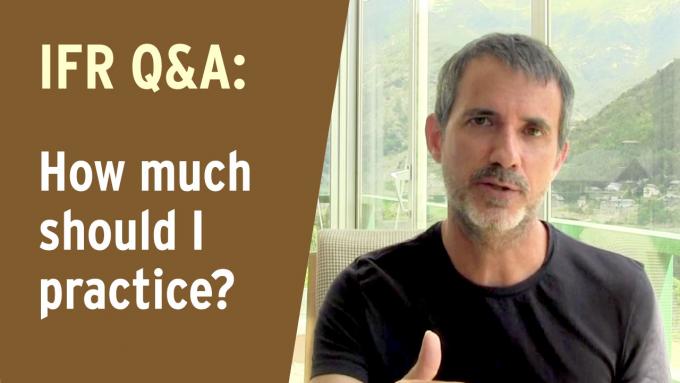Hello David,
I'm wondering about the trombone? The image you use of the notes being connected as one long chain doesn’t really fit with the trombone. Because the notes are not evenly spaced, it's not realistic to develop the same kind of ease moving around in certain areas. For instance, Bb to B is the longest slide move. Do you have any suggestions?
Thanks, John
David's response:
Hi John,
I understand exactly what you're describing. There are a few other instruments that also present a similar situation where the chromatic scale is especially irregular in terms of the physical movements required. This isn't a problem at all, and it isn't going to limit your learning with IFR in the slightest. Here are three ideas that will help:
1) Unlink the visualization benefits of Exercise 1 from the physical dexterity benefits. It’s not necessary to play fast in order to gain the visualization skills that we are developing in Exercise 1. Try to keep your focus on the end goal, which is to learn to visualize any musical interval without having to think about it too much. For example, let’s say that you're playing a ballad and you're playing the note B natural. If your musical idea requires you to move down a minor third from this note, would you know instantly that the note you're seeking is G#? For this exercise it actually doesn't matter how much physical dexterity you have, because you can always play within your physical abilities. All we want is the ability to see the musical landscape clearly so that we don't have to puzzle over these intervals in the moment. You can practice Exercise 1 as slowly as you want, and you will still receive 100% of this benefit.
 2) Don't neglect your physical dexterity either. Continue practicing both the IFR Staircase exercise and the IFR Daily Meditation in half steps, but just practice both exercises at a pace that is realistic and comfortable. For example in Staircase, instead of imagining yourself tracing bebop lines in a playful and dancing way (as I suggested in the book), instead imagine yourself playing a very slow passage in rubato from some contemporary classical piece. Focus on your intonation and the quality of your sound, and just enjoy moving in half steps in the most beautiful way you can. Don't worry so much about speed or agility in the beginning. Just think of this exercise as a preparation for those moments in the future when you really will want to play consecutive half steps. Regardless of how long that slide move is from Bb to B natural, there are going to be moments in your music performances when you really do want to play exactly these two notes. So Exercise 1 is the place where you can study this movement and get comfortable with it.
2) Don't neglect your physical dexterity either. Continue practicing both the IFR Staircase exercise and the IFR Daily Meditation in half steps, but just practice both exercises at a pace that is realistic and comfortable. For example in Staircase, instead of imagining yourself tracing bebop lines in a playful and dancing way (as I suggested in the book), instead imagine yourself playing a very slow passage in rubato from some contemporary classical piece. Focus on your intonation and the quality of your sound, and just enjoy moving in half steps in the most beautiful way you can. Don't worry so much about speed or agility in the beginning. Just think of this exercise as a preparation for those moments in the future when you really will want to play consecutive half steps. Regardless of how long that slide move is from Bb to B natural, there are going to be moments in your music performances when you really do want to play exactly these two notes. So Exercise 1 is the place where you can study this movement and get comfortable with it.
3) Music notation can also be a visualization tool. What you are lacking in terms of physical convenience on your instrument, you can make up for in knowledge of music notation. So going back to the example I described a moment ago where you’re on the note B natural and you want to go down a minor third, you can mentally solve this problem without even thinking about the trombone. Just think about the notes in the abstract, as they appear on all instruments. You know that moving down from B to A is a whole step, and then you need another half step to reach the minor third interval you desire. So the note you're looking for is G# / Ab. Knowing this, you can just play this note directly on the trombone. So even though your instrument is not as visual as a piano or a guitar, you can still visualize these intervals in the abstract using the names of the notes as your point of reference. And actually almost all brass and woodwind players do this to some extent, so it's nothing to fear or lament. Just the opposite. We want to master ALL of these different systems of thought so that we can play each note with confidence and clarity.
I hope this gives you some new ideas about how to approach these difficult movements in your practicing. Thanks for the great question, John!
David

